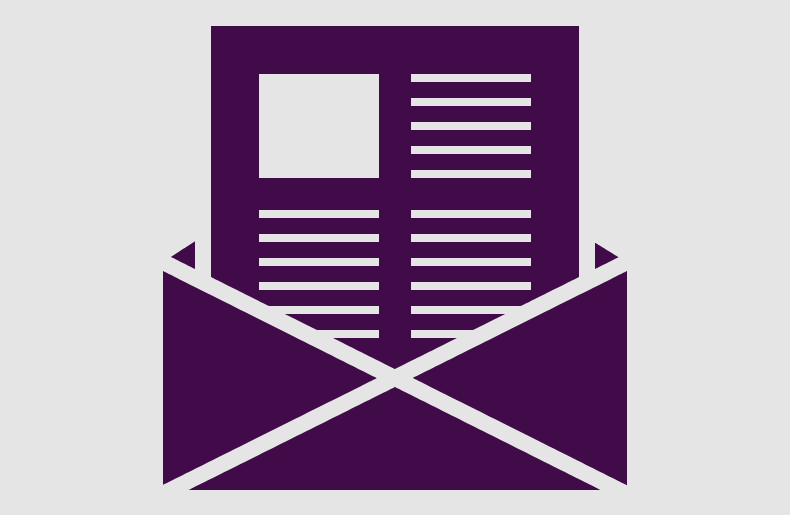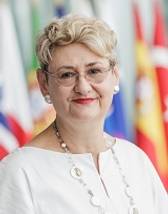Former Dutch Prime Minister Mark Rutte assumes the mantle of NATO Secretary General amid significant global challenges. How can he succeed in his new role?
The beginning of October marks the end of an era for NATO. Jens Stoltenberg will complete his decade-long tenure, and former Dutch Prime Minister Mark Rutte will take over as Secretary General.
They will start the day together on 1 October at NATO headquarters in Brussels, laying a wreath at the granite memorial for the fallen and addressing the alliance’s civilian and military staff, before Stoltenberg hands over the gavel at the circular table of the North Atlantic Council, where the ambassadors of the 32 allies sit. Stoltenberg will then head back home to Norway, confident that he is leaving the alliance stronger – with robust defence plans, more defence spending, and four new members.
Balancing Act
On the same morning, Rutte will hold his first press conference as Secretary General. Although he has not had an international position before, he is a veteran of NATO and EU summits, a pragmatic politician, and a master of compromise.
As the longest-serving Dutch prime minister, he led four coalition governments with often fractious political partners. At NATO, his main job will be to forge consensus among the 32 member countries, while ensuring the alliance keeps moving with the times.
It will be a balancing act between the secretary and the general. Rutte needs to hit the ground running, because NATO faces multiple security challenges. Yet he will also need to step carefully, with upcoming US presidential elections and a new EU leadership by the end of the year. As autocracies such as Russia, China, Iran and North Korea work to disrupt the international order, Rutte’s ultimate goal must be to keep the democracies of Europe and North America together.
Rutte’s agenda has already been largely set by NATO leaders at the Washington Summit in July. But he will no doubt want to achieve more by the next summit on 24–26 June 2025, especially since it will take place for the first time on his home turf, in The Hague. He has less than nine months to get off to a good start, and at least five big tests ahead.
Testing Times
The first test for the new Secretary General is Ukraine. With another harsh winter looming, Russia continues its brutal attacks on civilians and energy infrastructure, and Ukrainian President Volodymyr Zelenskyy is seeking support for his ‘victory plan’.
As NATO Secretary General, Rutte must take the lead in arguing for more defence spending across the alliance
To make sure that Ukraine is as strong as possible before any peace talks, leaders agreed in Washington that NATO would assume a key role in security assistance and training for Ukraine. This includes a new headquarters in Wiesbaden, Germany, logistics hubs in Central and Eastern Europe, and at least €40 billion in financial support next year.
As Dutch prime minister, Rutte took the lead in setting up the F-16 coalition in support of Ukraine, while also providing artillery, drones and ammunition. As Secretary General, he should make it a priority to visit Wiesbaden, to see how the new command is being set up and to inject a sense of urgency. He should also have an opportunity to coordinate on providing the support Ukraine needs to win at the meeting of the Ukraine Defense Contact Group, called by President Biden for October 12.
A second test will be money – not just for Ukraine, but for NATO as a whole. 23 out of the 32 allied countries are now investing at least 2% of GDP in defence. But, under Rutte’s leadership, the Netherlands only met the NATO guideline this year, just before he was appointed to be the next alliance chief.
For many years, Rutte was seen as the leader of the so-called ‘frugal’ faction in the EU, arguing for deeper reforms rather than constant injections of fresh cash. As NATO Secretary General, he must take the lead in arguing for more defence spending across the alliance. He should make a strong case not just about figures and percentages, but about the concrete capabilities that are needed to keep NATO nations safe in a dangerous world.
This will strengthen his credibility not only with the US, but also with Central and Eastern European countries, which were originally lukewarm about his appointment. The Netherlands has deployed troops to the German-led NATO multinational battlegroup in Lithuania, but Rutte should make a point of visiting other battlegroups to hear the concerns of countries closest to the Russian threat.
‘Whoever is on the Dance Floor’
Just one month after Rutte takes up the job, the US will hold one of the most consequential presidential elections in its history. How the new Secretary General manages the impact of its outcome is the third test, and possibly the most important.
A win for Kamala Harris is likely to lead to cautious continuity in transatlantic relations. On accepting the Democratic nomination, she pledged her support for both Ukraine and NATO. As president, she said, ‘I will stand strong with Ukraine and our NATO allies’.
But Rutte has also signalled that he is prepared for the alternative. ‘We should stop moaning and whining and nagging about Trump’, he told the Munich Security Conference in February, adding: ‘We have to work with whoever is on the dance floor’. Europe, he said, should in any case be spending more on defence, ramping up ammunitions production, and increasing its support for Ukraine because it was in its interests.
Like Stoltenberg, Rutte is known as a ‘Trump whisperer’. He is one of the few European politicians who developed a good working relationship with Donald Trump, who even said they had ‘become friends’. But Rutte was also able to push back with a smile, interjecting a clear ‘no, we have to work something out’ when Trump mused in 2018 that it would be positive if the US did not reach a trade agreement with the EU. However, a potential second Trump term could prove much more disruptive, with less US aid to Ukraine, more concessions to Russia, and further questioning of the value of NATO.
Regardless of who is elected in November, the alliance will need to step up defence spending and support to Ukraine. It will also need to do more to counter China’s influence, and put more substance into its partnership with democracies in the Indo-Pacific, in order to show it understands Washington’s concerns and to help maintain global stability.
A New Dynamic
Rutte’s fourth test is both an opportunity and a challenge. He is the first NATO leader from an EU country in a decade, dealing with what looks like the most NATO-friendly leadership in the EU for years. So among Brussels diplomats and officials, there is optimistic talk of a ‘new dynamic’.
Rutte will need to ensure that EU efforts on defence complement rather than undermine NATO at this critical time.
Stoltenberg helped bring NATO–EU ties to unprecedented levels. Yet France and some parts of the EU machine distrusted him due to Norway being outside of the EU, and because he did not mince his words about the risks of duplication and confusion in the EU’s drive towards ‘strategic autonomy’ when it comes to defence.
Upon his appointment in June, Rutte posted on social media that ‘the alliance is and will remain the cornerstone of our collective security’. While he brings a fresh understanding of the complex NATO–EU relationship, he will need to ensure that EU efforts on defence complement rather than undermine NATO at this critical time.
NATO–EU cooperation, including with the EU’s new defence commissioner, should be channelled towards tangible outcomes for Europe’s security. These could include supporting the national procurement of equipment required to execute NATO’s defence plans, more stringent implementation of NATO standards, more EU funding for military mobility, closer cooperation on training Ukrainian forces, and joint efforts to boost resilience against foreign malign activities.
Right-Hand Woman?
One of Mark Rutte’s first tasks will be to appoint a deputy. This fifth test also illustrates his leadership style.
Mircea Geoanǎ, who left in September to run for the Romanian presidency, was the first Deputy Secretary General from Central and Eastern Europe, succeeding Rose Gottemoeller, the first woman in the post. The next incumbent could be an Eastern European woman, not least because of the public push to appoint one as Secretary General instead of Rutte. But it could also be someone totally different. We simply don’t know.
On this and other NATO-related issues, Rutte has rightly kept his cards close to his chest in the last few months, avoiding any leaks or public discussions before taking up the job. As a recent profile reveals, under the surface of his image as an easy-going Dutchman who cycles to the office is a very controlled politician. Ultimately, it is Mark Rutte’s character as well as his experience that can make him – as Jens Stoltenberg was before him – a steady hand to steer NATO through testing times.
The views expressed in this Commentary are the author’s, and do not represent those of RUSI or any other institution.
Have an idea for a Commentary you’d like to write for us? Send a short pitch to commentaries@rusi.org and we’ll get back to you if it fits into our research interests. Full guidelines for contributors can be found here.
WRITTEN BY
Oana Lungescu
Distinguished Fellow
- Jim McLeanMedia Relations Manager+44 (0)7917 373 069JimMc@rusi.org



